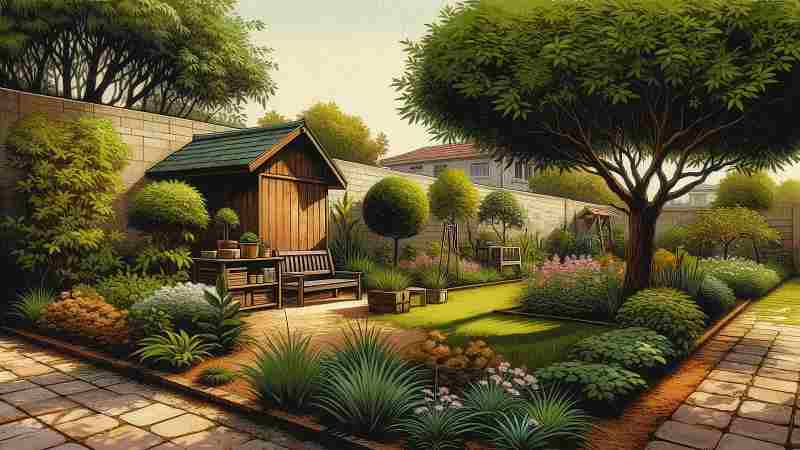Landscape design is more than just arranging plants and adding decorative elements. It is the thoughtful process of creating outdoor spaces that are both practical and visually appealing. A well-designed landscape not only enhances the beauty of a property but also increases its functionality, providing areas for relaxation, entertainment, and connection with nature. Striking the right balance between practicality and elegance requires an understanding of design principles, environmental considerations, and personal lifestyle needs.
In this article, we will explore the essential elements of landscape design, practical tips for creating harmonious spaces, and the importance of blending functionality with aesthetic appeal.
Understanding the Purpose of Landscape Design
Landscape design serves multiple purposes beyond decoration. At its core, it transforms outdoor areas into extensions of the living environment. Some of the key purposes include:
- Enhancing Aesthetics: Adding beauty and elegance to outdoor spaces through color, texture, and design.
- Improving Functionality: Creating spaces for relaxation, play, gardening, and gatherings.
- Environmental Benefits: Reducing soil erosion, conserving water, and supporting biodiversity.
- Increasing Property Value: Attractive landscaping boosts curb appeal and market value.
A successful design considers these factors to create an outdoor environment that feels natural yet purposeful.
Key Principles of Landscape Design
Like architecture or interior design, landscape design follows a set of principles that guide the overall composition. These principles ensure harmony, balance, and functionality.
1. Balance
Balance refers to creating symmetry or equilibrium in outdoor spaces. There are two main types:
- Formal Balance: Symmetrical design, where elements mirror each other.
- Informal Balance: Asymmetrical but visually balanced layouts that feel natural.
2. Unity
Unity ties all elements together, ensuring plants, pathways, and structures complement each other.
3. Proportion
This principle focuses on the size relationship between various elements. For example, a large tree should not overshadow a small garden bench.
4. Rhythm and Flow
Flow is created through repetition of shapes, patterns, or colors, guiding the eye across the landscape smoothly.
5. Focal Points
Strategically placed features such as fountains, sculptures, or unique plants draw attention and add character.
Practical Considerations in Landscape Design
While beauty is essential, practical aspects determine whether a design is truly livable.
Climate and Environment
Plants should be chosen based on climate zones, soil conditions, and water availability. Native plants often require less maintenance and thrive naturally.
Maintenance Requirements
A landscape should align with the homeowner’s capacity for maintenance. Low-maintenance plants, automated irrigation systems, and durable materials reduce upkeep.
Budget Planning
Budgeting helps prioritize essential features while avoiding unnecessary expenses. Small changes such as lighting or mulching can create a significant impact without high costs.
Safety and Accessibility
Design should consider walkways, lighting, and safe areas for children and pets. Non-slip surfaces and wide pathways improve usability.
Blending Practicality with Elegance
The heart of successful landscape design lies in blending usefulness with beauty. A practical space that lacks charm feels dull, while an elegant space that is hard to maintain quickly becomes unmanageable.
Here are some ways to achieve this balance:
- Multi-Functional Spaces: A patio can serve as a dining area, relaxation corner, or workspace.
- Sustainable Features: Rain gardens, composting areas, and water-efficient irrigation combine ecological benefits with stylish designs.
- Layered Planting: Mixing shrubs, flowers, and trees adds depth and visual interest while serving practical functions like shade or privacy.
- Outdoor Lighting: Well-placed lights improve safety while creating ambiance.
This balance is the essence of The Art of Landscape Design: Blending Practicality with Elegance.
Incorporating Hardscapes and Soft-soaps
Landscape design involves two main elements—hardscapes and soft-soaps—that need to be harmonized.
Hardscapes
These are non-living elements such as pathways, patios, decks, fences, and walls. They provide structure, durability, and practical usage.
Soft-soaps
These include living elements such as plants, flowers, trees, and grass. They soften the appearance of hard structures and add color and vibrancy.
When designed together, hardscapes and soft-soaps create a cohesive and balanced outdoor environment.
Popular Styles in Landscape Design
Different design styles allow homeowners to reflect their personality and lifestyle in their outdoor spaces.
Modern Minimalist
Clean lines, neutral colors, and simple plant arrangements define this style. Functionality and low maintenance are its strengths.
Traditional Garden
Lush greenery, floral beds, and decorative fountains create a timeless, elegant look.
Mediterranean
Warm tones, terracotta tiles, and aromatic herbs like lavender and rosemary bring a sunny, rustic charm.
Japanese Zen
Focused on tranquility, this style incorporates rocks, water features, and minimal planting for a meditative atmosphere.
Desert Landscaping
Ideal for arid regions, this style uses drought-resistant plants, gravel, and stone arrangements.
Steps to Create a Functional and Beautiful Landscape
Designing a landscape involves thoughtful planning and execution. Here’s a step-by-step approach:
- Assess the Space: Evaluate soil type, sunlight exposure, and existing features.
- Define Goals: Decide whether the space will be for relaxation, entertaining, gardening, or children’s play.
- Create a Layout Plan: Sketch pathways, plant zones, and seating areas.
- Choose Plants Wisely: Select plants suited to the local climate and maintenance level.
- Incorporate Hardscapes: Add patios, pathways, or fences for structure.
- Layer the Landscape: Mix tall, medium, and low-height elements for depth.
- Add Decorative Elements: Use lighting, art pieces, or water features as focal points.
- Review and Adjust: Ensure the design balances functionality with beauty.
Sustainable Landscape Design
Modern landscape design emphasizes sustainability without compromising aesthetics. Some eco-friendly practices include:
- Rainwater Harvesting: Collecting rainwater for irrigation.
- Native Planting: Using plants adapted to the local ecosystem.
- Composting: Recycling organic waste to nourish the soil.
- Permeable Surfaces: Reducing runoff and improving groundwater absorption.
These methods reduce environmental impact while enhancing outdoor charm.
Common Mistakes to Avoid in Landscape Design
Even with good intentions, certain mistakes can affect the overall design. Avoiding them ensures a more successful outcome.
Overcrowding plants, leading to poor growth.
Ignoring maintenance requirements.
Choosing style over comfort and practicality.
Poor drainage planning, causing waterlogging.
Lack of proper lighting and pathways.
Conclusion
Landscape design is a delicate art that combines creativity, technical knowledge, and practicality. When executed thoughtfully, it transforms ordinary outdoor spaces into havens of beauty and functionality. The key lies in creating harmony between natural and constructed elements, ensuring that each feature serves both a purpose and an aesthetic role.
The journey of The Art of Landscape Design: Blending Practicality with Elegance reminds us that outdoor spaces should not only look beautiful but also enhance the way we live, play, and connect with nature. With careful planning, sustainable choices, and a clear vision, anyone can achieve a landscape that reflects both elegance and everyday usability.

